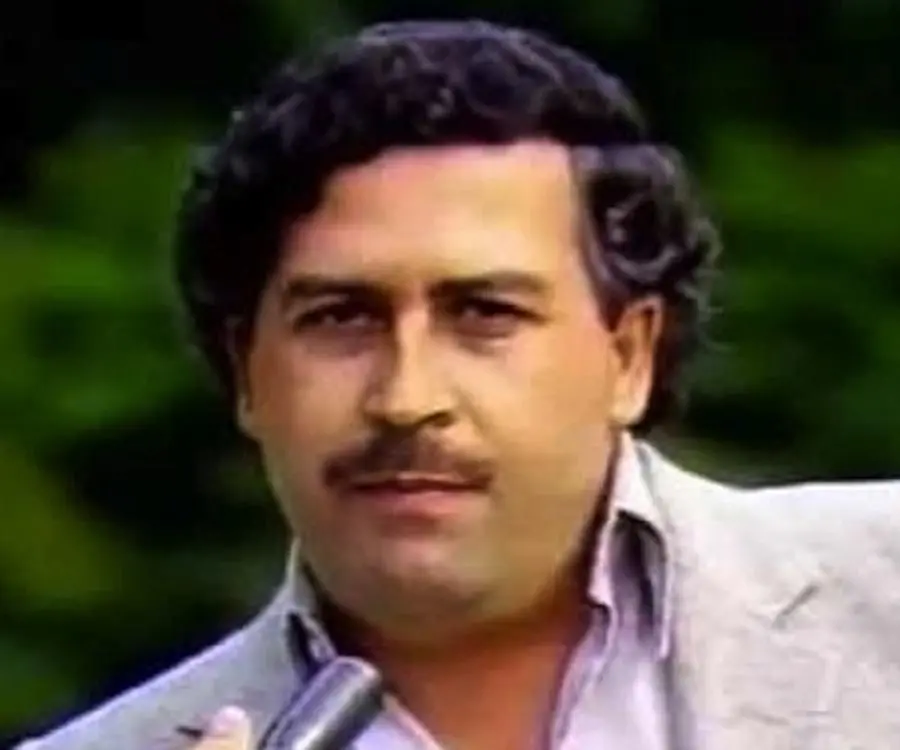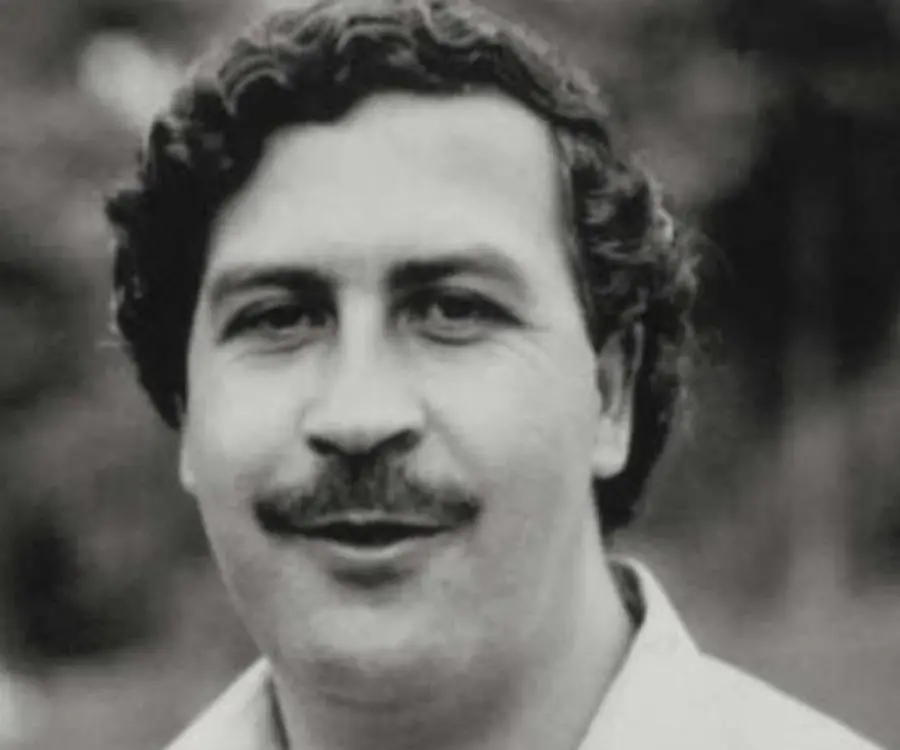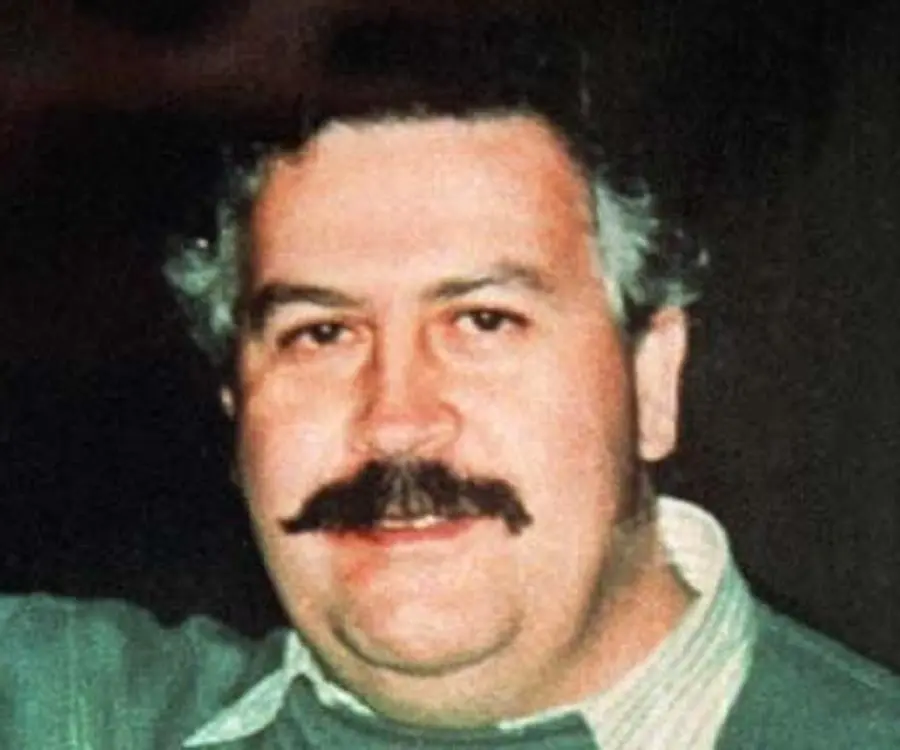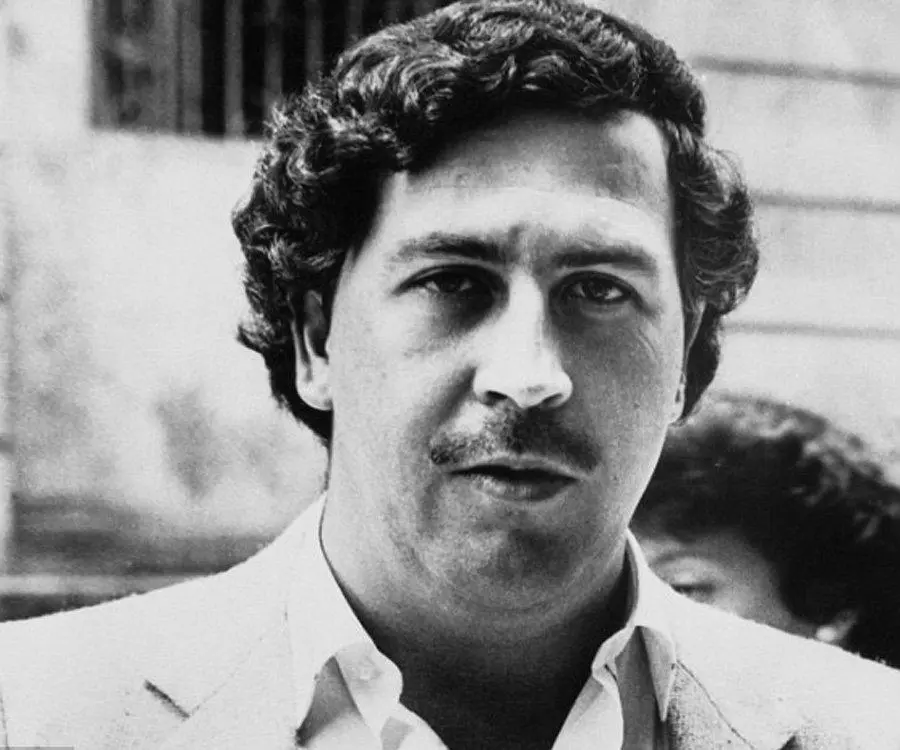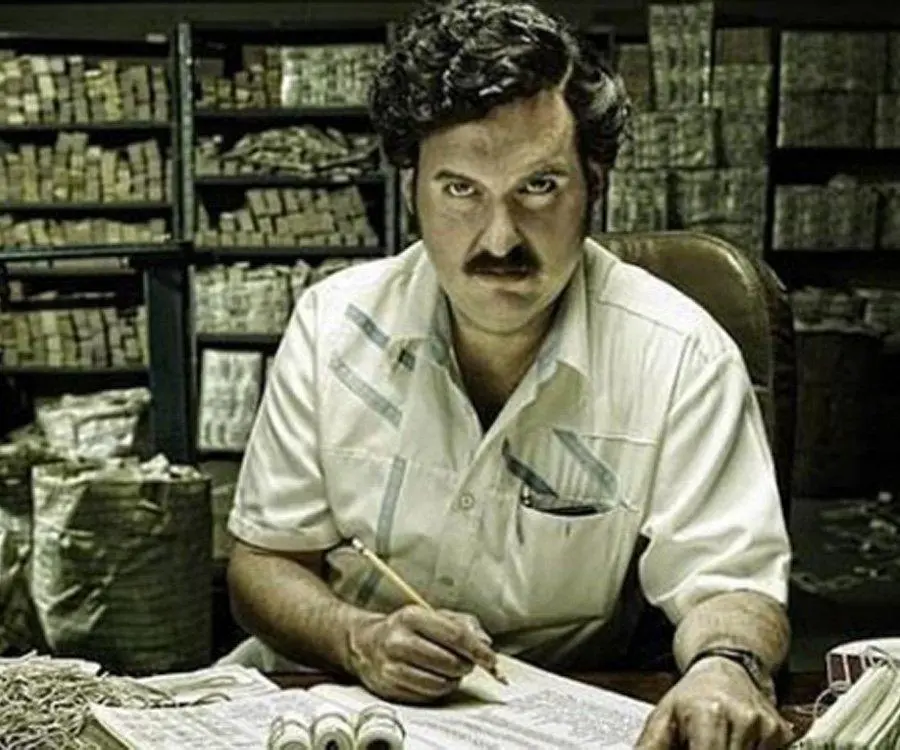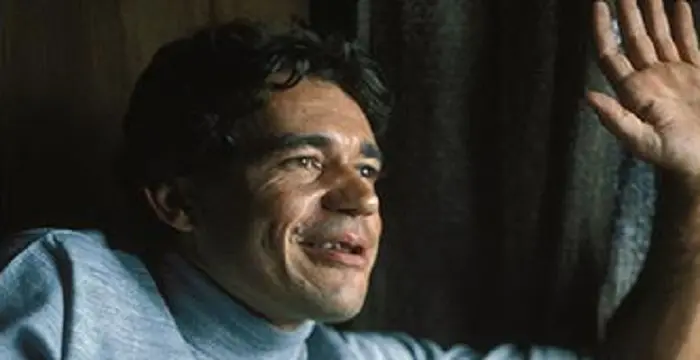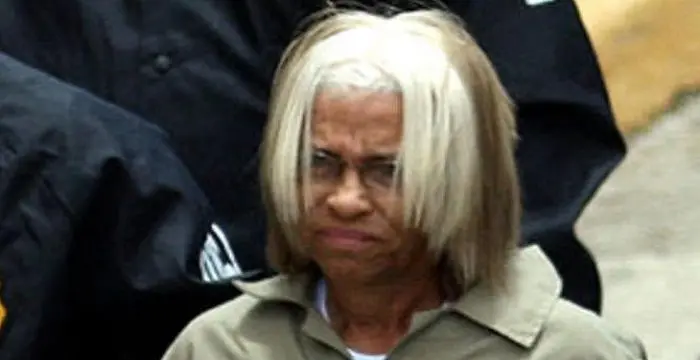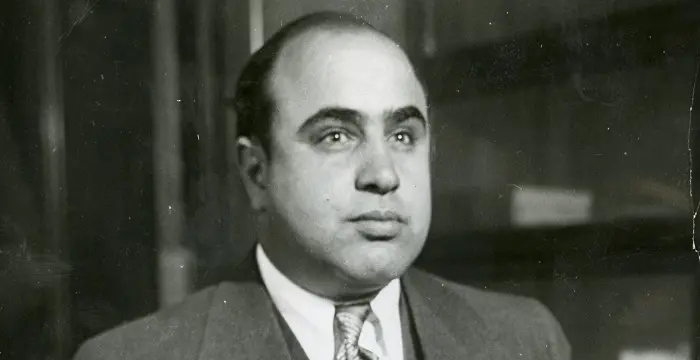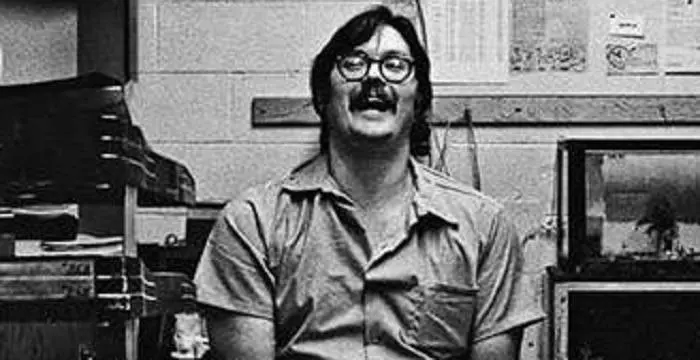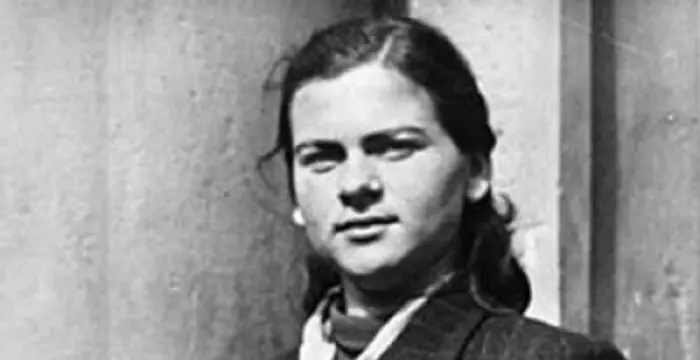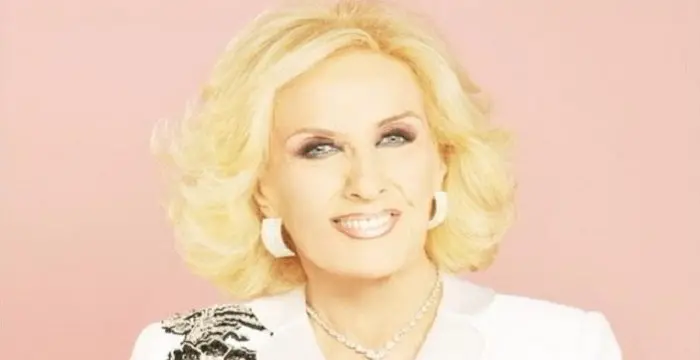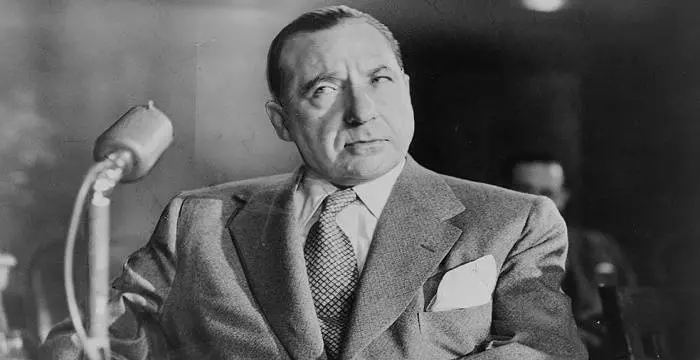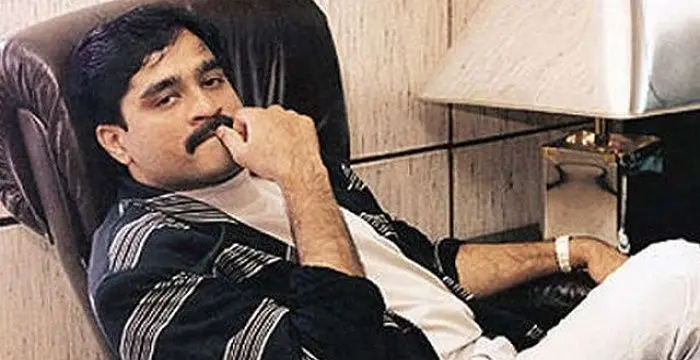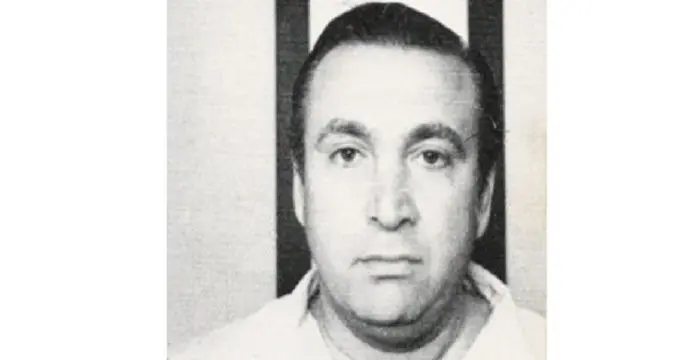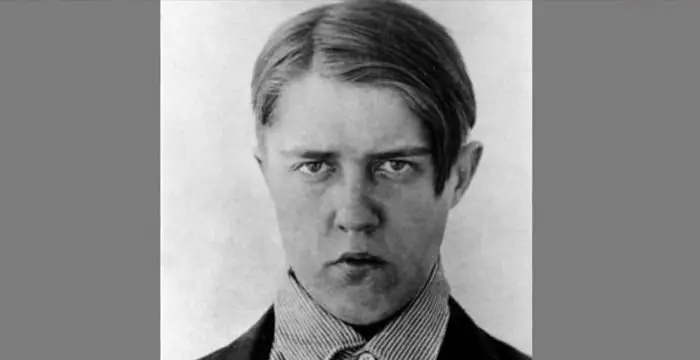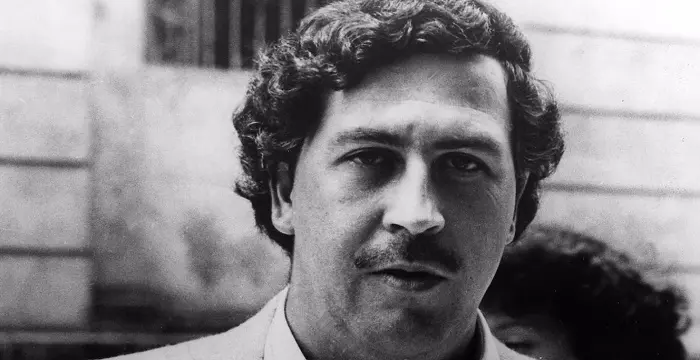
Pablo Escobar - Colombian Drug Lord, Timeline and Personal Life
Pablo Escobar's Personal Details
Pablo Emilio Escobar Gaviria was a notorious Colombian drug lord
| Information | Detail |
|---|---|
| Birthday | December 1, 1949 |
| Died on | December 2, 1993 |
| Nationality | Colombian |
| Famous | Criminals, Drug Lords, Gangsters, Colombian Drug Lord |
| Nick names | El Doctor, El Patrón, Don Pablo, El Señor |
| Spouses | Maria Victoria Henao |
| Siblings | Roberto Escobar |
| Known as | Pablo Emilio Escobar Gaviria |
| Childrens | Manuela Escobar |
| Universities |
|
| Birth Place | Rionegro |
| Height | 167 |
| Gender | Male |
| Father | Abel de Jesús Dari Escobar |
| Mother | Hemilda Gaviria |
| Net Worth | $2 Billion |
| Sun Sign | Sagittarius |
| Born in | Rionegro |
| Famous as | Colombian Drug Lord |
| Died at Age | 44 |
Pablo Escobar's photo
Who is Pablo Escobar?
Pablo Emilio Escobar Gaviria often referred as the ‘King of coke’ was a notorious Colombian drug lord. He was considered as the most flagrant, influential and wealthiest criminal in the history of cocaine trafficking. The ‘Medellin Cartel’ was formed by him in collaboration with other criminals to ship cocaine to the American market. The 1970s and 1980s saw Pablo Escobar and the ‘Medellin Cartel’ enjoying near monopoly in the cocaine smuggling business in the U.S. shipping over 80% of the total drug smuggled in the country. He earned billions of dollars and by the early 90s his known estimated net worth was $30 billion. The earnings sum up to around $100 billion when money buried in various parts of Colombia are included. In 1989 Forbes mentioned him as the seventh wealthiest person in the world. He led an extravagant life with the fortune he made. His empire included four hundred luxury mansions across the world, private aircrafts and a private zoo that housed various exotic animals. He also had his own army of soldiers and seasoned criminals. While his vast empire was built on murders and crimes, he was known for sponsoring soccer clubs and charity projects.
// Famous Drug Lords
Carlos Lehder
Carlos Lehder is a former Colombian drug lord who is currently imprisoned in United States. Know more about his life in this brief biography.
Julianna Farrait
Julianna Farrait, also known as Julie Farrait, is the wife of notorious drug dealer Frank Lucas. Check out this biography to know about her family, crimes, personal life, etc.
Al Capone
Al Capone was a notorious American gangster. This biography of Al Capone provides detailed information about his childhood, life, profile & timeline.
Childhood & Early Life
Pablo Escobar was born in on December 1, 1949, Rionegro, Colombia, to Abel de Jesús Dari Escobar and Hermilda Gaviria as their third child among seven. His father was a farmer and his mother was an elementary school teacher.
His criminal activities began on the streets of Medellin in his teens when he used to steal gravestones and sell them to smugglers after sanding them. Reberto Escobar, his brother on the contrary claimed that the stones were from owners of those cemeteries where the clients failed to pay for site care and that one of Escobar’s relatives were in the monument business.
He studied in the ‘University Autónoma Latinoamericana of Medellín’ for a short period.
Since childhood he had a strong desire to become a millionaire by the age of 22. His criminal activities along with Oscar Bernal Aguirre included selling fake lottery tickets, stealing cars, selling contraband cigarettes and operating petty street scams.
He became a bodyguard and a thief in early 1970s and kidnapped a Medellin executive to earn a quick $100,000. His next step up in the criminal world was to work with Alvaro Prieto, a contraband smuggler.
Criminal Career
In ‘The Accountant's Story: Inside the Violent World of the Medellín Cartel’ Roberto Escobar discussed how an obscure and simple middleclass Pablo Escobar rose to become one of the richest men under the Sun.
Roberto Escobar used to keep track of all the money earned by Pablo Escobar as his accountant. At its peak when ‘Medellin Cartel’ smuggled 15 tons of cocaine daily to the U.S. worth over half a billion dollars, Pablo and his brother purchased rubber bands worth $1000 per week to wrap the cash bundles. About 10% of the money stored in their warehouses was lost every year due to spoilage by rats.
Pablo entered the drug trade in the 1970s and developed his cocaine operation in 1975. He himself used to fly a plane between Colombia and Panama for smuggling the drug to the U.S.
In 1975, after he returned to Medellin from Ecuador with a heavy load, he was arrested along with his men. Thirty-nine pounds of white paste was found in their possession. He failed in an attempt to bribe the judges of his case and later killed the two arresting officers resulting in dropping of his case. Soon he started applying his tactics of either bribing or killing to deal with the authorities.
Earlier, he used to smuggle cocaine in old tyres of planes and a pilot would receive $500,000 per flight. Later when its demand in the U.S. escalated, he arranged for additional shipments and alternative routes and networks including California and South Florida.
In collaboration with Carlos Lehder he developed Norman’s Clay in the Bahamas as the new island trans-shipment point. Between 1978 and 1982, this point remained the main route of smuggling for the Medellin Cartel’.
He shelled out several million dollars and purchased 7.7 square miles of land which includes his estate ‘Hacienda Napoles’.
The mid-1980s saw him at the peak of his power smuggling about 11 tons of cocaine per flight to the U.S. According to Roberto Escobar, Pablo Escobar also employed two remote controlled submarines to smuggle cocaine.
In 1982, the ‘Colombian Liberal Party’ elected him to the ‘Chamber of Representatives of Colombia’ as an alternate member. He represented the Colombian government officially at the swearing ceremony of Felipe Gonzalez in Spain.
Another allegation against Escobar was that he backed the left-wing guerrillas of the ‘19th April Movement’ (M-19) who stormed the Colombian Supreme Court in 1985. Many of the judges on the court were murdered and files and papers were destroyed at a time when the court was considering Colombia’s extradition treaty with the United States The treaty would have allowed the country to extradite drug lords to the United States for prosecution.
As his network expanded and gained notoriety, he became infamous worldwide. By that time the ‘Medellin Cartel’ controlled a major portion of drug trafficking covering the United States, Spain, Mexico, Dominic Republic, Venezuela, Puerto Rico and other countries of Europe and America. Rumours that his network reached Asia were also doing the rounds.
His policy to deal with the Colombian system that encompassed intimidation and corruption was referred as ‘plata o plomo’. Though literally it means ‘silver or lead’ in his dictionary, it meant either accept ‘money’ or face ‘bullets’. His criminal activities included killings of hundreds of state officials, civilians and policemen and bribing politicians, judges and government officials.
By 1989 his ‘Medellin Cartel’ was in control of 80% of cocaine market in the world. It was generally believed that he was the chief financier of the Colombian football team ‘Medellín's Atlético Nacional’. He was also credited for developing multi-sports courts, football fields and aiding children’s football team.
Although he was considered an enemy of the Colombian government and the U.S., he was successful in creating goodwill among the poor people. He was instrumental in building schools, churches and hospitals in western Colombia and also donated money for housing projects of the poor. He was quite popular in the local Roman Catholic Church and the locals of Medellin often helped and protected him including hiding him from authorities.
His empire became so powerful that other drug smugglers gave away 20% to 35% of their profit to him for smooth shipment of their cocaine to the U.S.
In 1989, he was accused of getting Luis Carlos Galan, a Colombian presidential candidate, assassinated. He was also accused of the bombings at the ‘DAS Building’ in Bogota and at the Avianca Flight 203.
After the murder of Luis Carlos Galan the Cesar Gavitis led administration acted against him. The government negotiated with him to surrender on condition of a lesser sentence along with favourable treatment during his imprisonment.
In 1991, he surrendered to the Colombian government and was kept in La Catedral that was converted into a private luxurious prison. Before he surrendered the newly approved Colombian Constitution prohibited extradition of Colombian citizens which was suspected to be influenced by Escobar and other drug mafias.
On July, 1992, after finding that Escobar was operating his criminal activities from La Catedral, the government tried to shift him to a more conventional jail. However, he came to know of such plan through his influence and made a timely escape.
The U.S. ‘Joint Special Operations Command’ and ‘Centra Spike’ jointly started hunting him in 1992. ‘Search Bloc’ a special Colombian task force was trained by them for this purpose.
The ‘Los Pepes’ (Los Perseguidos por Pablo Escobar, "People Persecuted by Pablo Escobar") a vigilante group aided by rivals and former associates of Pablo Escobar executed a bloody carnage. This resulted in killing of around 300 relatives and associates of Escobar and destruction of huge amount of property of his cartel.
Co-ordination among ‘Search Bloc’, the Colombian and U.S. intelligence agencies and ‘Los Pepes’ through intelligence sharing so that ‘Los Pepes’ to bring down Escobar and his remaining few allies.
Personal Life & Legacy
Pablo Escobar married Maria Victoria in March 1976. The couple had two children - Juan now known as Juan Sebastián Marroquín Santos and Manuela.
On December 2, 1993, after a fifteen month manhunt by ‘Search Bloc’, the Colombian and the U.S. intelligence agencies and the ‘Los Pepes’, he was found from his hiding and shot by the ‘Colombian National Police’. It still remains a mystery as to who shot him in his head as the relatives of Escobar believe that he shot himself to death.
Around 25,000 people attended his burial including most of the Medellin’s poor who were extensively aided by him. His grave rests at Itagui’s ‘Cemetario Jardins Montesacro’.
Trivia
During 1990s, the government expropriated his luxurious estate ‘Hacienda Napoles’, the unfinished Greek-style citadel and the zoo under the law ‘extinción de dominio’ and handed them over to the low-income families. The property was reformed to a theme park encompassed by four luxury hotels alongside the zoo and a tropical park.
Escobar has remained a subject of several books, films, television shows, documentaries, music and even games.
// Famous Criminals
Edmund Kemper
Edmund Kemper is a convicted serial killer from America who murdered ten people. Check out this biography to know about his childhood, life, crimes and other facts about him.
Irma Grese
Irma Grese was a notorious German Nazi concentration camp guard during the Second World War. This biography profiles her childhood, life, horrifying acts, death and other facts.
Mirtha Jung
Mirtha Jung is the ex-wife of former drug smuggler George Jung. Check out this biography to know about her childhood, family, personal life, crimes, etc.
Pablo Escobar biography timelines
- // 1000Roberto Escobar used to keep track of all the money earned by Pablo Escobar as his accountant. At its peak when ‘Medellin Cartel’ smuggled 15 tons of cocaine daily to the U.S. worth over half a billion dollars, Pablo and his brother purchased rubber bands worth $1000 per week to wrap the cash bundles. About 10% of the money stored in their warehouses was lost every year due to spoilage by rats.
- // 1st Dec 1949Pablo Escobar was born in on December 1, 1949, Rionegro, Colombia, to Abel de Jesús Dari Escobar and Hermilda Gaviria as their third child among seven. His father was a farmer and his mother was an elementary school teacher.
- // 1975Pablo entered the drug trade in the 1970s and developed his cocaine operation in 1975. He himself used to fly a plane between Colombia and Panama for smuggling the drug to the U.S.
- // 1975In 1975, after he returned to Medellin from Ecuador with a heavy load, he was arrested along with his men. Thirty-nine pounds of white paste was found in their possession. He failed in an attempt to bribe the judges of his case and later killed the two arresting officers resulting in dropping of his case. Soon he started applying his tactics of either bribing or killing to deal with the authorities.
- // Mar 1976Pablo Escobar married Maria Victoria in March 1976. The couple had two children - Juan now known as Juan Sebastián Marroquín Santos and Manuela.
- // 1978 To 1982In collaboration with Carlos Lehder he developed Norman’s Clay in the Bahamas as the new island trans-shipment point. Between 1978 and 1982, this point remained the main route of smuggling for the Medellin Cartel’.
- // 1982In 1982, the ‘Colombian Liberal Party’ elected him to the ‘Chamber of Representatives of Colombia’ as an alternate member. He represented the Colombian government officially at the swearing ceremony of Felipe Gonzalez in Spain.
- // 1985Another allegation against Escobar was that he backed the left-wing guerrillas of the ‘19th April Movement’ (M-19) who stormed the Colombian Supreme Court in 1985. Many of the judges on the court were murdered and files and papers were destroyed at a time when the court was considering Colombia’s extradition treaty with the United States The treaty would have allowed the country to extradite drug lords to the United States for prosecution.
- // 1989By 1989 his ‘Medellin Cartel’ was in control of 80% of cocaine market in the world. It was generally believed that he was the chief financier of the Colombian football team ‘Medellín's Atlético Nacional’. He was also credited for developing multi-sports courts, football fields and aiding children’s football team.
- // 1989In 1989, he was accused of getting Luis Carlos Galan, a Colombian presidential candidate, assassinated. He was also accused of the bombings at the ‘DAS Building’ in Bogota and at the Avianca Flight 203.
- // 1991In 1991, he surrendered to the Colombian government and was kept in La Catedral that was converted into a private luxurious prison. Before he surrendered the newly approved Colombian Constitution prohibited extradition of Colombian citizens which was suspected to be influenced by Escobar and other drug mafias.
- // 1992On July, 1992, after finding that Escobar was operating his criminal activities from La Catedral, the government tried to shift him to a more conventional jail. However, he came to know of such plan through his influence and made a timely escape.
- // 1992The U.S. ‘Joint Special Operations Command’ and ‘Centra Spike’ jointly started hunting him in 1992. ‘Search Bloc’ a special Colombian task force was trained by them for this purpose.
- // 2nd Dec 1993On December 2, 1993, after a fifteen month manhunt by ‘Search Bloc’, the Colombian and the U.S. intelligence agencies and the ‘Los Pepes’, he was found from his hiding and shot by the ‘Colombian National Police’. It still remains a mystery as to who shot him in his head as the relatives of Escobar believe that he shot himself to death.
// Famous Gangsters
Frank Costello
Frank Costello was an Italian-American gangster and crime boss. This biography provides detailed information about his childhood, family, criminal activities, etc.
Danny Greene
Danny Greene was an infamous Irish American gangster who rose to dominate the criminal underbelly of the city of Cleveland during the 1970s. Check out this biography to know more about his childhood and life,
Dawood Ibrahim
Dawood Ibrahim is a notorious Indian gangster and a designated terrorist. This biography profiles his childhood, family, personal life, criminal activities, etc
Roy DeMeo
Roy DeMeo was a New York mobster. Check out this biography to know about his childhood, family life, crimes, and other facts about his life.
Lucky Luciano
Lucky Luciano was a Sicilian-born American mobster considered the father of modern organized crime in the United States. This biography of Lucky Luciano provides detailed information about his childhood, life, achievements, works & timeline.
Alvin Karpis
Alvin Karpis, better known as “Creepy,” was a notorious gangster and a founder member of the infamous ‘Barker–Karpis Gang.’ Find more about the childhood, personal life, and criminal activities of the gangster.
Pablo Escobar's FAQ
What is Pablo Escobar birthday?
Pablo Escobar was born at 1949-12-01
When was Pablo Escobar died?
Pablo Escobar was died at 1993-12-02
Where was Pablo Escobar died?
Pablo Escobar was died in Medellín, Colombia
Which age was Pablo Escobar died?
Pablo Escobar was died at age 44
Where is Pablo Escobar's birth place?
Pablo Escobar was born in Rionegro
What is Pablo Escobar nationalities?
Pablo Escobar's nationalities is Colombian
What is Pablo Escobar nick names?
Pablo Escobar's nickNames is El Doctor, El Patrón, Don Pablo, El Señor
Who is Pablo Escobar spouses?
Pablo Escobar's spouses is Maria Victoria Henao
Who is Pablo Escobar siblings?
Pablo Escobar's siblings is Roberto Escobar
Who is Pablo Escobar childrens?
Pablo Escobar's childrens is Manuela Escobar
What was Pablo Escobar universities?
Pablo Escobar studied at University of Antioquia
How tall is Pablo Escobar?
Pablo Escobar's height is 167
Who is Pablo Escobar's father?
Pablo Escobar's father is Abel de Jesús Dari Escobar
Who is Pablo Escobar's mother?
Pablo Escobar's mother is Hemilda Gaviria
What is Pablo Escobar's sun sign?
Pablo Escobar is Sagittarius
How famous is Pablo Escobar?
Pablo Escobar is famouse as Colombian Drug Lord
